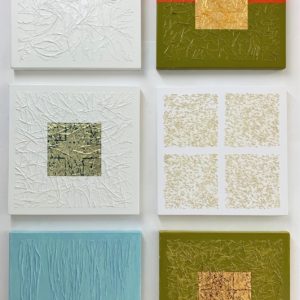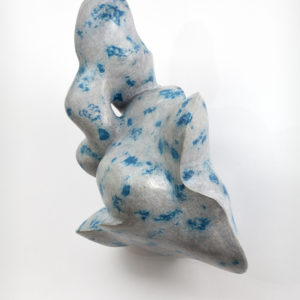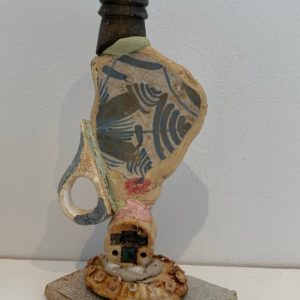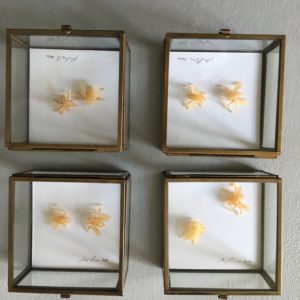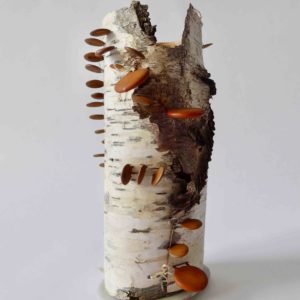£695.00
Isao Miura
“Little Basho”: Traveller in a Paper Coat
Bronze; edition of 5, 2015
16 x 11 x 6 cm
Description
Isao Miura made this “Little Basho” bronze figure while he was sculptor in residence at Chelsea College of Art in 2015. It represents Matsuo Basho (1644-1694), the most famous poet of the Edo period in Japan. Isao Miura has shown this work as part of Japan Water in 2021.
Traveller in a Paper Coat
The little Basho bronze figure is actually titled ‘Traveller in a Paper Coat’ because Basho spent much of his life travelling across Japan. Sometimes these were dangerous journeys, but he always described them simply, as ‘just my body and a paper coat’. His travels inspired his writing, most famously ‘The Narrow Road to the Deep North’ (1689), considered his masterpiece.
This is what Isao and his partner Chris Beckett wrote for an exhibition in Oxford in 2016, when this work was first on show:
“In spring 1689, Matsuo Basho sold his house in Edo (now Tokyo) and set off with his friend, Sora, on a long risky journey to the north of Japan, mostly on foot. He travelled light, just a paper coat, light cotton gown, his writing brush and ink. His aim was to see the great northern sights like Matsushima and Kisagata Bay which had inspired poets before him, a process the Japanese call ‘uta makura’, literally ‘poem pillow’, but more accurately translated as ‘the poem road’. This exhibition explores the rich legacy of Basho’s work, both visually and poetically, and it documents some of Isao’s artistic and physical journey from the deep north of Japan where he grew up, ‘translating’ Basho’s text not only into English words but into sketch, to plaster, and bronze.”
In 2018, Miura together with partner, Chris Beckett and film-maker Nicolai Azariah, put on a second multi-media exhibition in London celebrating this theme.
About the artist
Isao Miura is a Zen Japanese painter and sculptor based in London. His media include oil and inks on canvas, paper and tatami (Japanese reed mats). He makes sculptures in bronze, wood, stone and installations using a variety of found or crafted objects. He trained in Japan, then at the Chelsea School of Art and the Royal College of Art in London, where he studied first under Roger Ackling and then with Ken Kiff.


